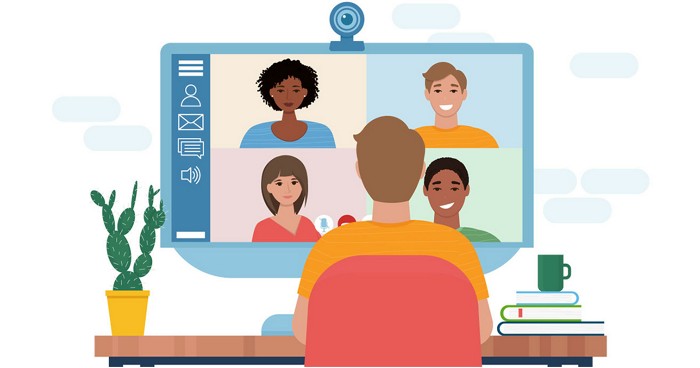Advertisement
Grab your lab coat. Let's get started
Welcome!
Welcome!
Create an account below to get 6 C&EN articles per month, receive newsletters and more - all free.
It seems this is your first time logging in online. Please enter the following information to continue.
As an ACS member you automatically get access to this site. All we need is few more details to create your reading experience.
Not you? Sign in with a different account.
Not you? Sign in with a different account.
ERROR 1
ERROR 1
ERROR 2
ERROR 2
ERROR 2
ERROR 2
ERROR 2
Password and Confirm password must match.
If you have an ACS member number, please enter it here so we can link this account to your membership. (optional)
ERROR 2
ACS values your privacy. By submitting your information, you are gaining access to C&EN and subscribing to our weekly newsletter. We use the information you provide to make your reading experience better, and we will never sell your data to third party members.
Careers
NSF Program Fosters Scientists’ Entrepreneurial Spirit
I-Corps helps agency researchers determine whether their discoveries can make successful start-ups
by Andrea Widener
August 20, 2012
| A version of this story appeared in
Volume 90, Issue 34

Like many scientists, Darren W. Johnson of the University of Oregon thought he knew how a discovery in his lab would be useful in the real world.
But after going through the National Science Foundation’s Innovation Corps (I-Corps) program, which is designed to help scientists explore the commercial viability of their NSF-supported basic research, he realized he had it all wrong.
“I thought you come up with cool basic science and you go find a market that it’s for. That’s totally backward,” says Johnson, an associate chemistry professor. Instead, “you find a market that has a need and find out where your research fits in that ecosystem.”
That’s been the main lesson for many of the 100 research teams that have gone through the three I-Corps training sessions since the program launched in July 2011. The course teaches teams led by NSF grantees what makes a successful start-up and helps them assess whether their own discoveries are ready for prime time.
The 10-week course begins and ends with the teams coming for in-person training at a university campus with webinars and consultations in between to check on their progress. A $50,000 grant covers the costs related to the course and travel to meet potential customers over a six-month period.
The first two rounds of I-Corps were held at Stanford University and were so successful that NSF decided to offer the third session, not just at Stanford but also at the University of Michigan and Georgia Institute of Technology.
In addition, universities have asked to use the class in their technology transfer offices and engineering schools, and other federal agencies are also interested in getting involved.
I-Corps At A Glance
Established: July 2011
Number of rounds to date: Three
Number of participating teams to date: 100
Number of people per team: Three (one principal investigator, one postdoc or grad student, one business mentor)
Grant size: $50,000 over six months
“What was remarkable for me was the fact that in an agency that oversees a $7.4 billion budget, a program that has an initial annual budget of $5 million has generated so much interest and excitement, not only in the academic community but in the industry and nonprofit communities and Congress,” NSF Director Subra Suresh said at a July event marking the program’s one-year anniversary. The proposed fiscal 2013 budget is $19 million.
I-Corps relies on a curriculum developed by serial entrepreneur, author, and business professor Steve Blank, who admits he strained to remember what NSF stood for when he was first called by the agency. The NSF official said, “I’m from the U.S. government, and we need your help,” Blank remembers.
NSF program managers had been following Blank’s blog documenting an entrepreneurship class he taught to Stanford engineering students. They wanted him to teach a similar class to NSF grantees to help more federal research make its way into the marketplace.
Blank agreed, and 90 days later the first 21 teams—consisting of an NSF-funded scientist as principal investigator (PI), a business mentor, and an entrepreneurial lead, usually a postdoc or graduate student—were on the Stanford campus to take part in the class. At Stanford, Blank teaches the class with support from Bay Area local venture capitalists and entrepreneurs. At Michigan, Georgia Tech, and any new sites, local staff and businesspeople will teach the course using Blank’s curriculum.
“In the lab, you make all kinds of discoveries, and it is the rare case where that actually makes it out of the lab,” says chemistry professor Stephen G. DiMagno, a PI from the University of Nebraska, Lincoln. He was drawn to the I-Corps program because, “I got tired of things not making it out of the lab, so I decided to do it myself.”
Traditionally, the people who run start-ups have operated more on faith than on actual market research, Blank says. That was also true of many of the scientists coming into the I-Corps class. “If you’re a scientist and you’ve spent your career on a new technology, you’re a true believer. It’s human nature,” he says.
Blank’s philosophy is that start-up companies are completely different from well-established businesses that already know their market, and they need to act that way. A science start-up’s main task is to find out if a technological breakthrough can fill a need. Scientists usually have an idea about what their technology can do, but the course pushes them to find out—it’s hypothesis testing for business ideas.
I-Corps teams do that by making a minimum of 100 calls to find out what customers actually want. It sounds simple—“I have invented the obvious,” Blank jokes—but intense research like this isn’t part of the process for most start-up companies.
What they learn comes as a revelation for many of the teams, who hear that their original idea isn’t quite right for a business.
For example, Johnson’s Oregon lab had identified a cellular chloride sensor that he thought could be commercialized as an assay that other scientists could use in studying basic cellular processes. But after visits to a few biotech companies, Johnson and his postdoc, Calden N. Carroll, realized that the market for such a test would be small and that a start-up would have a hard time competing with major laboratory supply groups in reaching scientists.
Fortunately, another application quickly emerged in an unexpected area: agriculture. Because the technology could also be used as a nitrate detector, it could help farmers determine if they are overfertilizing their fields. “It not only has huge implication for the farmers but also huge environmental implication for the world,” Johnson explains.
Making so many calls is a big time commitment. NSF originally estimated that the course would require a 10- to 15-hour-per-week effort, but the participants often spend much more. For example, Johnson says Carroll spent more like 60 hours a week on the project.
“When you apply for an NSF grant you sweat when you write it, and then you sweat when they’re making a decision” about whether to award you a grant, DiMagno says. “With I-Corps, you sweat every day.”
The amount of work the I-Corps program requires is not a shock just for the scientists. Mike Patterson is a graduate of the University of Pennsylvania’s Wharton School of business and had run small businesses before, so he thought he knew what he was getting into when he joined the I-Corps program.
“I probably learned as much as the scientists did, and these guys didn’t know what venture capital was when we started,” says Patterson, who served as the business mentor for a Penn team that is working to make graphene films commercially available.
One thing Patterson learned is how to keep scientists thinking about the business aspect of their technology and not reverting to basic research.
“They have such an ingrained tendency to jump right into the science,” says Patterson, who by the middle of the I-Corps program had quit his job as a midlevel manager at Bank of America to work on the graphene start-up full time. “I had to keep them focused and keep reminding all of us that this wasn’t about the technology. It was about finding out what the companies were using it for.”
That’s also the message DiMagno of Nebraska took away from his experience. “Many good technologies won’t make good products, and it has nothing to do with their potential,” he says. “That’s the hard thing to get over.”
After completing the program, DiMagno decided to continue moving forward with his start-up. He had previously licensed several technologies out of his lab, but none had gone anywhere. The I-Corps program gave him a chance to make an educated decision about whether to pursue starting a company or not.
For many, exposure to the class has been a life-changing experience. “When I started my Ph.D., I wasn’t entirely sure what I wanted to do after graduation,” says Emily Brune, a chemical engineering graduate student who served as entrepreneurial lead for her University of Arkansas team, which has a process to make drug manufacturing more efficient. “Now I’m chief scientific officer of my own company.”
But leaving academia isn’t a goal for most of the I-Corps PIs. Johnson, for one, intends to stay at Oregon while also working on his start-up. Yet the I-Corps experience will have a lasting impact on his academic career, he says. It will make him ask companies about the potential commercial applications of his research before he applies for future NSF grants.
That connection with customers “really gave us an aha moment about where the technology had a home in the market,” he says. “I would recommend I-Corps to any chemists or chemical engineers.”




Join the conversation
Contact the reporter
Submit a Letter to the Editor for publication
Engage with us on Twitter